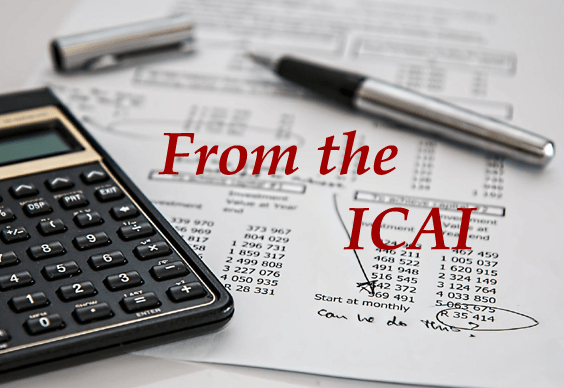Govt announces 'One State, One RRB' implementation from May 1, 2025
Delhi, Apr 8, 2025
The new structure is aimed at improving the efficiency of the RRBs and minimising competition among the public sector banks that sponsor them, as part of FinMin's "One State, One RRB" policy
The Union government on Monday released a gazetted notification announcing the amalgamation of several Regional Rural Banks (RRBs), effective from May 1, 2025.
In line with the powers granted under Section 23A(1) of the Regional Rural Banks Act, 1976, the notification stipulates that these RRBs will merge into a single entity, inheriting their respective properties, powers, rights, obligations, and duties.
The new structure is aimed at improving the efficiency of the RRBs and minimising competition among the public sector banks that sponsor them, as part of the Union finance ministry's “One State, One RRB” policy, which was first reported in September 2024 by Business Standard.
The notification details the amalgamation of several banks across different states, with the aim of creating larger, more robust regional institutions. In Andhra Pradesh, Chaitanya Godavari Grameena Bank, Andhra Pragathi Grameena Bank, Saptagiri Grameena Bank, and Andhra Pradesh Grameena Vikas Bank will merge to form the Andhra Pradesh Grameena Bank, with its head office in Amravati and sponsored by Union Bank of India.
In Bihar, Dakshin Bihar Gramin Bank and Uttar Bihar Gramin Bank will be combined into Bihar Gramin Bank, headquartered in Patna, sponsored by Punjab National Bank.
In Gujarat, Baroda Gujarat Gramin Bank and Saurashtra Gramin Bank will merge to form Gujarat Gramin Bank, with its head office in Vadodara, sponsored by Bank of Baroda. Similarly, Jammu & Kashmir will see the merging of J&K Grameen Bank and Ellaquai Dehati Bank into Jammu and Kashmir Grameen Bank, headquartered in Jammu, and sponsored by Jammu and Kashmir Bank Ltd.
In Karnataka, Karnataka Vikas Grameena Bank and Karnataka Gramin Bank will merge into Karnataka Grameena Bank, with its head office in Ballari, sponsored by Canara Bank. In Madhya Pradesh, Madhya Pradesh Gramin Bank and Madhyanchal Gramin Bank will combine to form Madhya Pradesh Gramin Bank, headquartered in Indore, and sponsored by Bank of India.
In Maharashtra, Maharashtra Gramin Bank and Vidarbha Konkan Gramin Bank will merge to form Maharashtra Gramin Bank, with its head office in Chhatrapati Sambhajinagar, sponsored by Bank of Maharashtra. Odisha will see the amalgamation of Odisha Gramya Bank and Utkal Grameen Bank into Odisha Grameen Bank, headquartered in Bhubaneswar, sponsored by Indian Overseas Bank.
In Rajasthan, Rajasthan Marudhara Gramin Bank and Baroda Rajasthan Kshetriya Gramin Bank will merge to form Rajasthan Gramin Bank, headquartered in Jaipur, under the sponsorship of State Bank of India. In Uttar Pradesh, Baroda UP Bank, Aryavart Bank, and Prathama UP Gramin Bank will be combined into Uttar Pradesh Gramin Bank, with its head office in Lucknow, and sponsored by Bank of Baroda.
Finally, in West Bengal, Bangiya Gramin Vikash Bank, Paschim Banga Gramin Bank, and Uttarbanga Kshetriya Gramin Bank will be merged into West Bengal Gramin Bank, headquartered in Kolkata, and sponsored by Punjab National Bank.
This large-scale amalgamation is expected to streamline operations, enhance the financial strength of the RRBs, and improve their ability to serve rural communities more effectively. Each new RRB will operate under the sponsorship of a major public sector bank, ensuring greater financial stability and operational efficiency.
RRBs were established regionally and are oriented towards rural areas, with capital contributed by the Government of India, state governments, and sponsor banks under the RRB Act, 1976.
The largest public sector lender, State Bank of India (SBI), sponsors the most number of RRBs (14), followed by Punjab National Bank (nine) and Canara Bank (four). Bank of Baroda, Bank of India, and Indian Bank sponsor three RRBs each; Central Bank of India sponsors two; UCO Bank, Jammu and Kashmir Bank, Indian Overseas Bank, Union Bank of India, and Bank of Maharashtra sponsor one each.
Among the states, Andhra Pradesh, Uttar Pradesh, and West Bengal have three RRBs each, while Bihar, Gujarat, Jammu & Kashmir, Karnataka, Madhya Pradesh, Maharashtra, Odisha, Rajasthan, and Telangana have two RRBs each.
RRBs reported their highest-ever consolidated net profit of Rs 7,571 crore for FY24, with a gross non-performing assets (GNPA) ratio of 6.1 per cent — the lowest in 10 years.
[The Business Standard]

